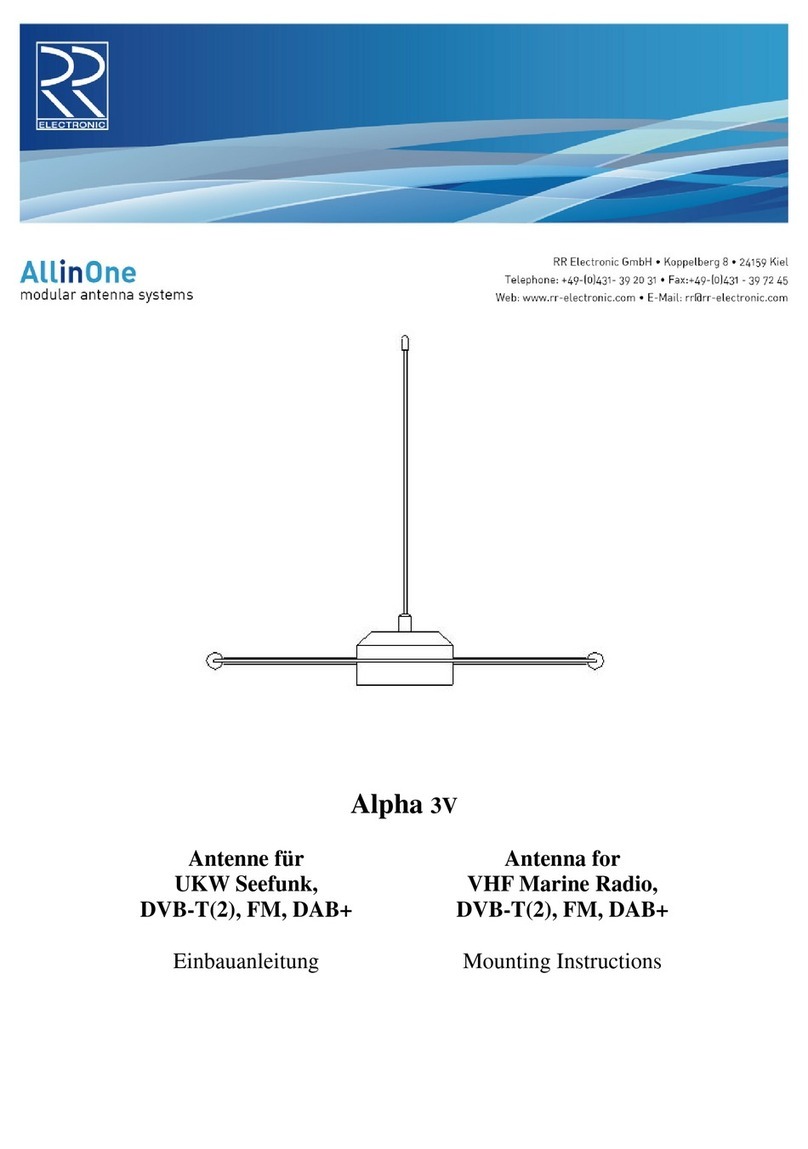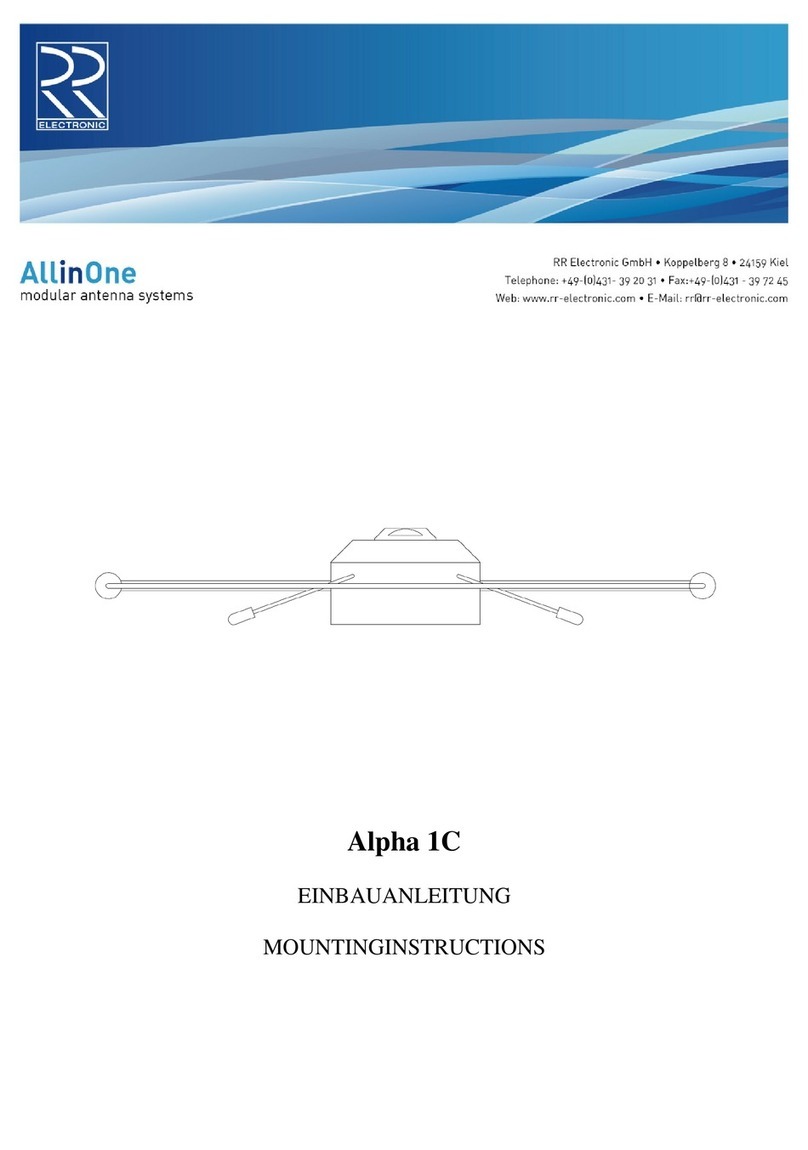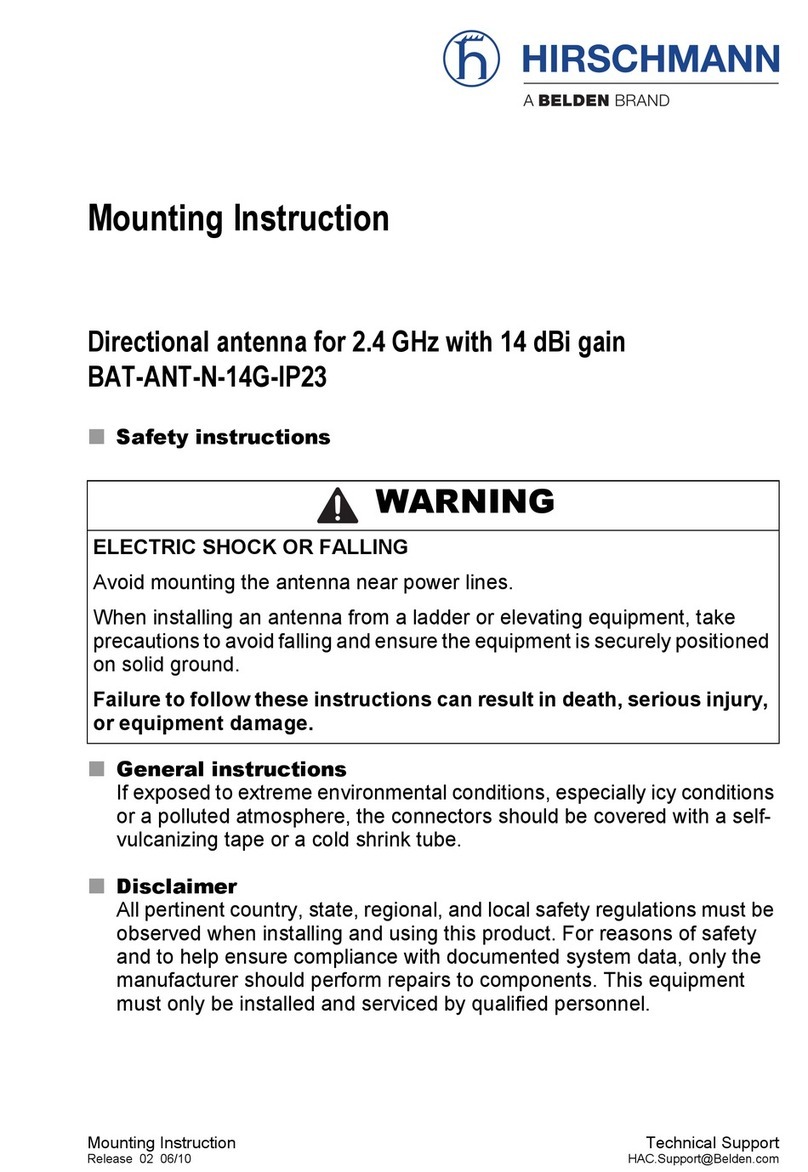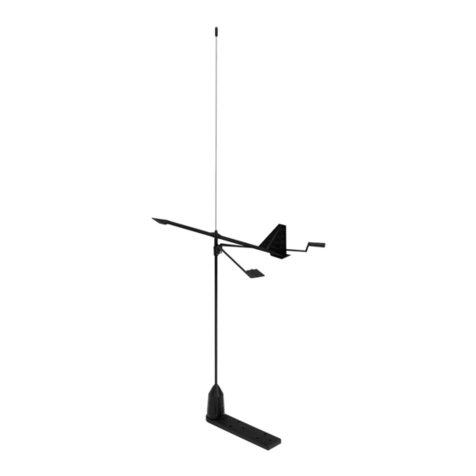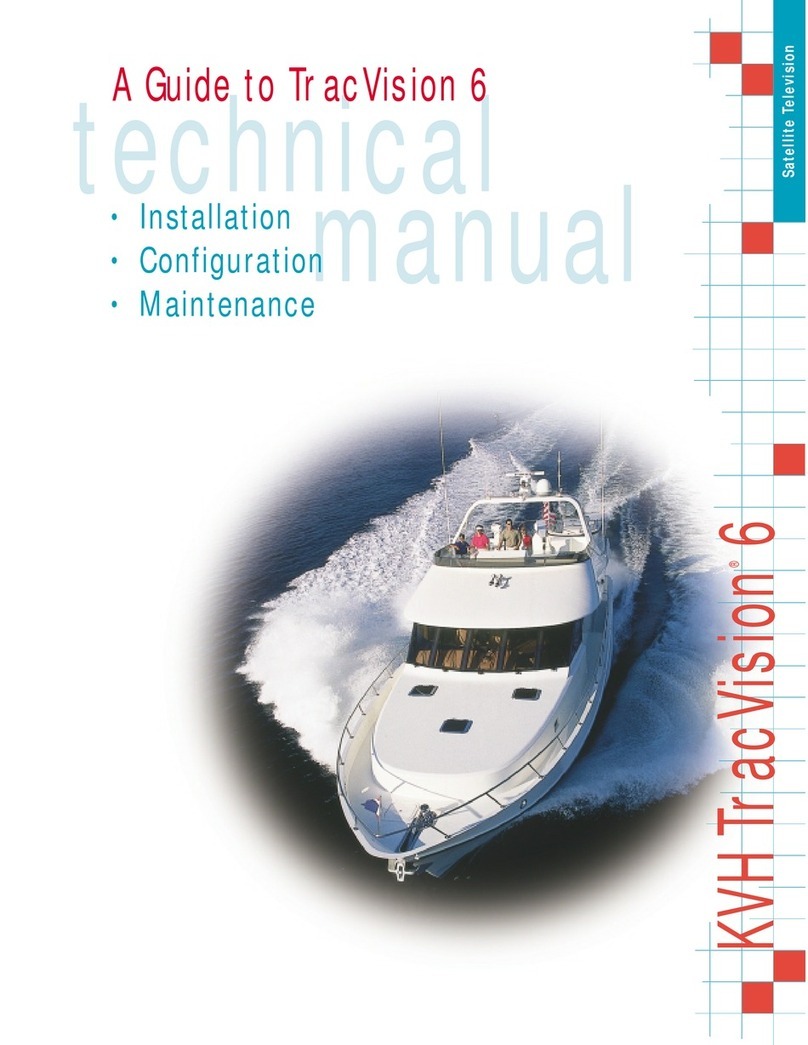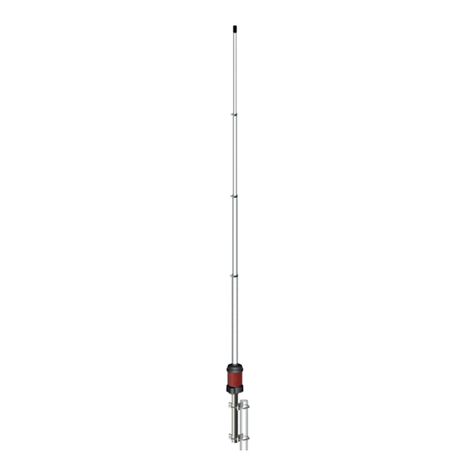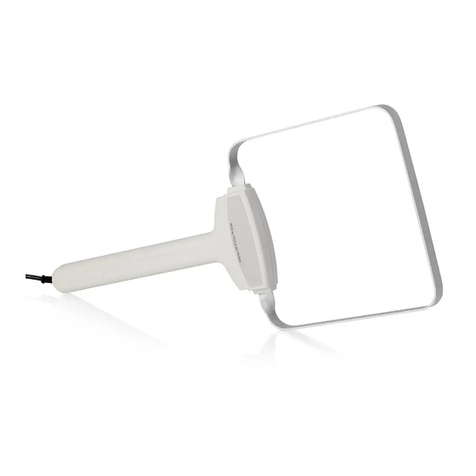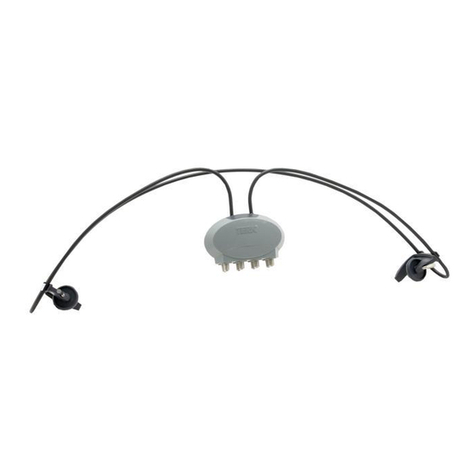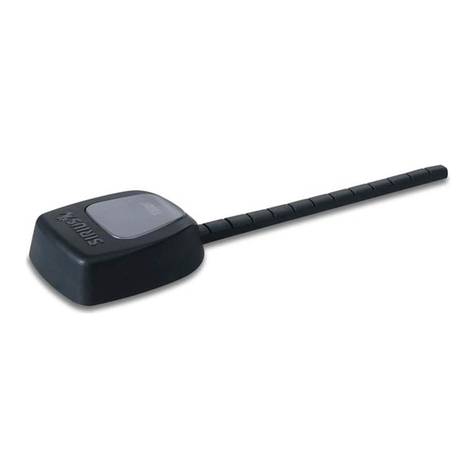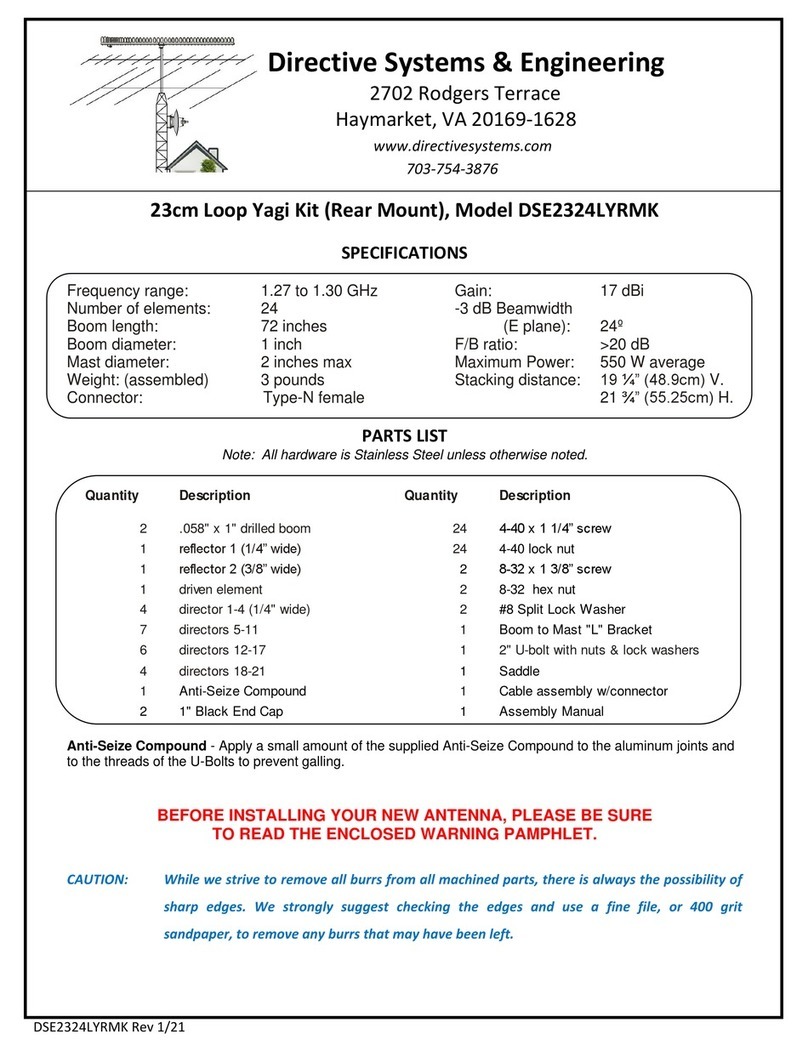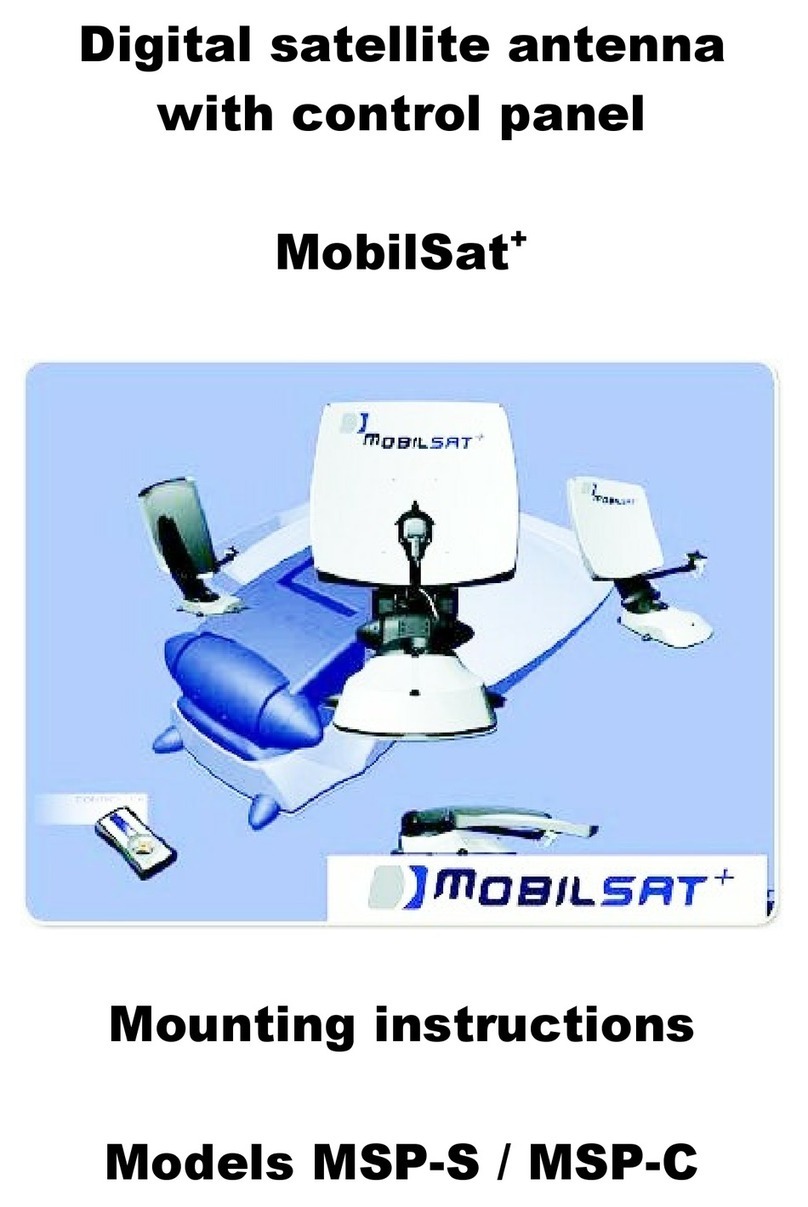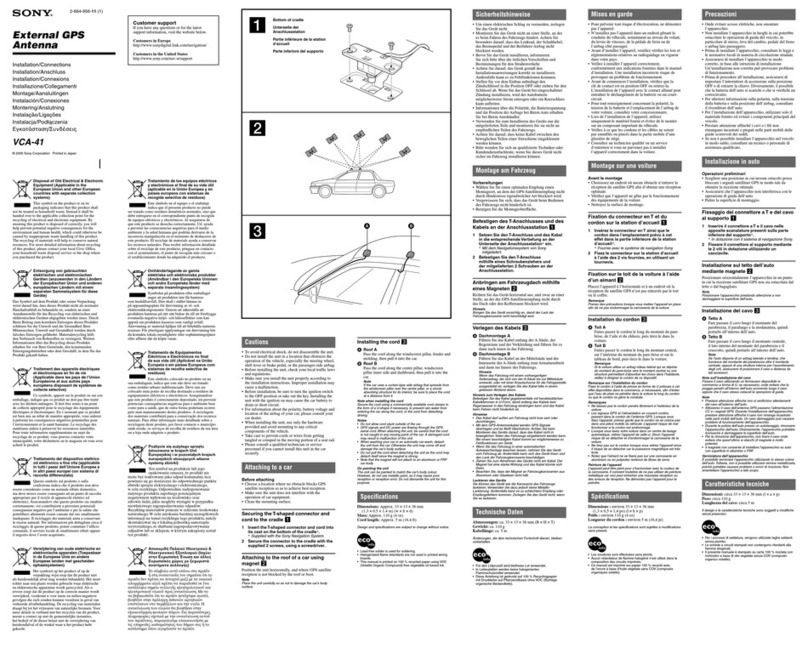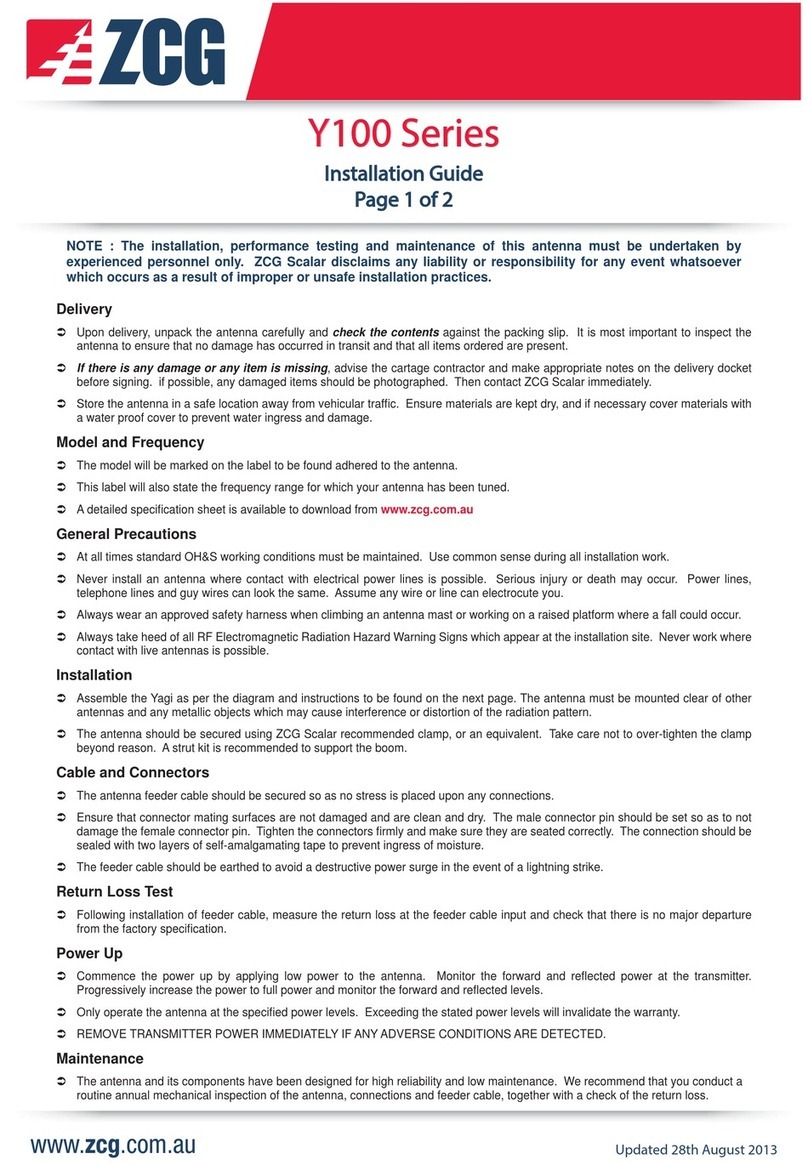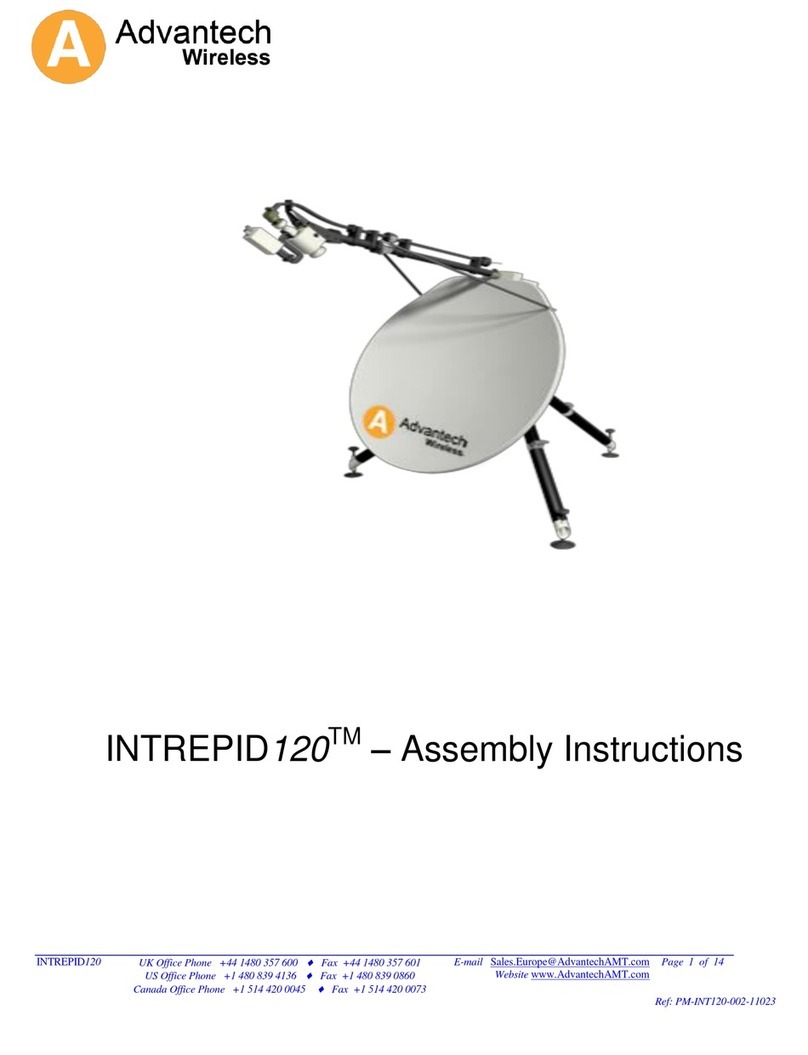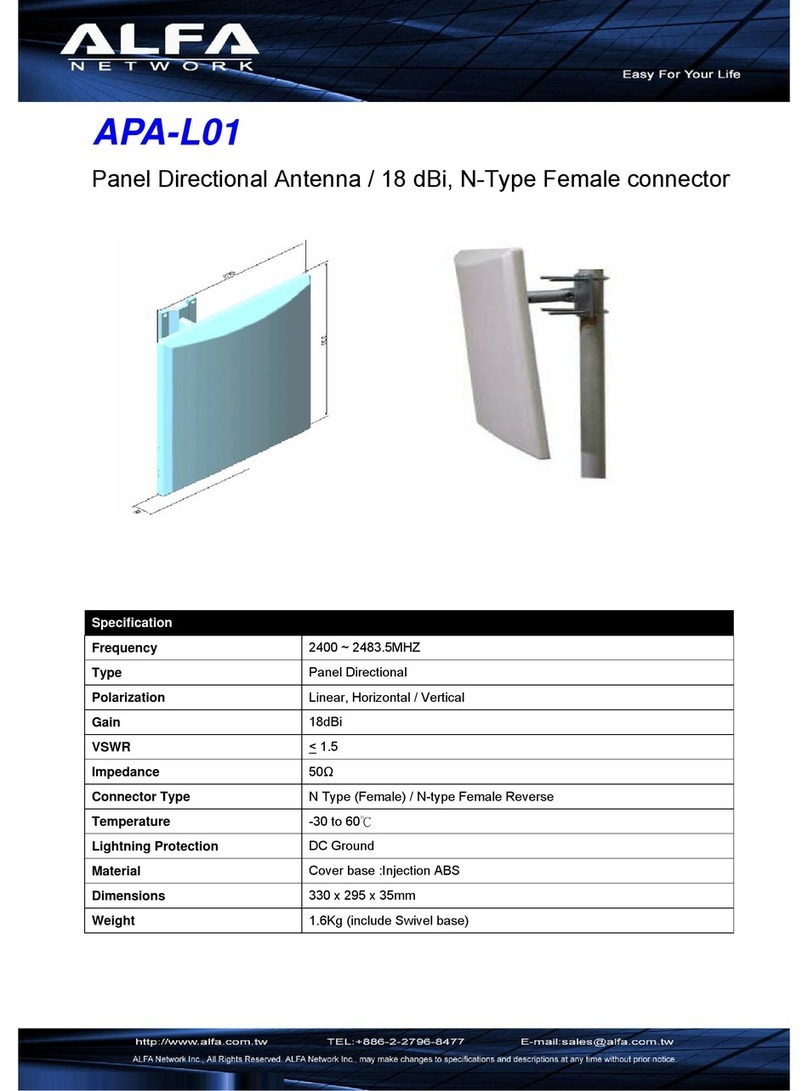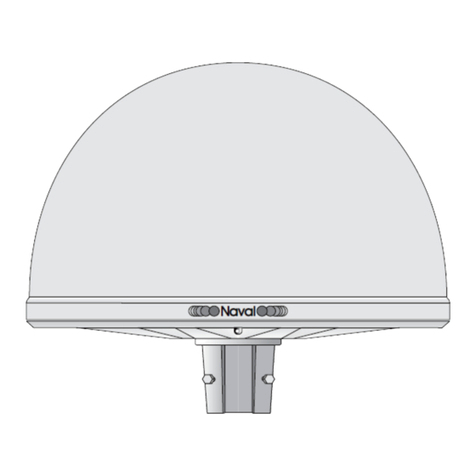Installation der Antennenanlage PACIFIC 4G
Die Antennenanlage PACIFIC 4G besteht aus den Einzelantennen DELTA 200S, DELTA 4G und
DELTA 12 M, die zu einer Einheit zusammengesetzt montiert werden.
Antennenstandort:
Die Antennenanlage PACIFIC 4G sollte möglichst im Masttop installiert werden. Oberhalb der Antenne
sollten sich keine weiteren Antennen befinden.
Antennenkabel:
Als Antennenkabel sind für die Antennenanlage PACIFIC 4G Koaxialkabel mit 50 Ohm Wellenwiderstand zu
verwenden, vorzugsweise Aircell-7 oder Belden H2000 Flex. An der Antennenseite werden ein BNC-Stecker
für die DELTA 200S + DELTA 4G und ein N-Stecker für die DELTA 12M verwendet. ACHTUNG! UHF-
Stecker (PL-Stecker) sind für diese Antennenanlage NICHT geeignet! Wichtig: Die Kabel müssen mit
einer Zugentlastung versehen sein! Für eventuelle Trennstellen am Mastfuß werden BNC- und N-Stecker
montiert, um eine Verwechslung auszuschließen. Die Antennenkabel sind auf möglichst kurzem Weg zu den
Antennenverteilern AV 112 und AV 304 zu führen. Vor dem Anschluss sind die Antennenkabel auf
Kurzschluss zu prüfen!
Zusammenbau der Antennen:
Zunächst wird der Stecker an der Oberseite der DELTA 4G mit der Antenne DELTA 200 S verbunden, und
diese Antennen werden zusammengesetzt. Anschließend wird das Antennenkabel mit BNC-Stecker von
unten durch das Rohr des Antennenhalters und durch die Öffnung in der DELTA 12 M gezogen und mit der
DELTA 4G verbunden. Das Antennenkabel mit N-Stecker wird durch die Öffnung im Antennenhalter
gezogen und mit der DELTA 12 M verbunden. Schließlich werden die Antennen zusammengesetzt und mit
dem Antennenhalter verschraubt.
Wichtig: Sämtliche Metallteile der Antennen sowie die Steckverbindungen dürfen keine elektrische
Verbindung zu anderen Metallteilen des Schiffes haben, da der Kabelaußenleiter mit dem Minuspol
des Bordnetzes verbunden ist.
Die Antennenverteiler AV 112, AV 205 und AV 304 werden unter Deck in der Nähe der anzuschließenden
Geräte montiert.
Anschluss der Antennenverteiler AV 304 und AV 205:
Der Antennenverteiler AV 304 wird so montiert, dass sich die Anschlüsse auf der linken Seite befinden.
Dann ist oben der Anschluss „GSM/UMTS/LTE“, in der Mitte der Anschluss „DELTA 4G“ und unten der
Anschluss „VHF“.
Für alle Anschlüsse des AV 304 werden BNC-Stecker verwendet.
Am Anschluss „GSM/UMTS/LTE“ des AV 304 wird ein Mobiltelefon oder ein GSM/UMTS/LTE Router oder
ein GSM/UMTS/LTE Modem über ein möglichst kurzes Kabel mit BNC-Stecker angeschlossen.
Der Anschluss „DELTA 4G“ des AV 304 wird mit dem Antennenkabel verbunden.
Der Anschluss „AV 205 Input 6“ des AV 304 wird über ein BNC–BNC-Verbindungskabel mit dem
Antennenanschluss des AV 205 verbunden „Input: Antenna DELTA 200 S“.
Am Anschluss 5 „UKW Funktelefon (VHF)“ des AV 205 wird das UKW Seefunkgerät angeschlossen. Dies ist
der einzige Anschluss mit UHF-Norm, um eine Verwechslung der Anschlüsse zu vermeiden.
Die anderen Geräte werden mit den Anschlüssen 1 bis 4 des AV 205 über BNC-Stecker verbunden
(Zuordnung der Anschlüsse siehe Deckel AV 205).
Alle Geräte, die an das System angeschlossen werden, müssen erdungsfrei sein!
Anschluss des Antennenverteilers AV 112:
Der Antennenverteiler AV 112 wird unter Deck in der Nähe der anzuschließenden Geräte montiert. Der
Anschluss „INPUT: DELTA 12 M“ wird mit der Antenne DELTA 12 M über einen N-Stecker verbunden. Für
die Anschlüsse „Output1 und Output2: DVB-T / T-DAB“ werden F-Steckverbinder und 75 Ohm Kabel
benötigt.
Stromversorgung:
Wichtig: Die Stromversorgung darf erst nach Abschluss sämtlicher Installationsarbeiten einge-
schaltet werden.
Die Stromversorgung sollte über einen Schalter oder Sicherungsautomaten der Schalttafel angeschlossen
werden. Wenn keines der angeschlossenen Empfangsgeräte in Betrieb ist, sollte die Stromversorgung für
die Antennenanlage ausgeschaltet werden.
Beim Betrieb der Antennenanlage PACIFIC 4G ist zu beachten, dass der AV 205 mit Strom versorgt wird,
bevor (oder sobald) die daran angeschlossenen Empfangsgeräte eingeschaltet werden. Andernfalls kann es
